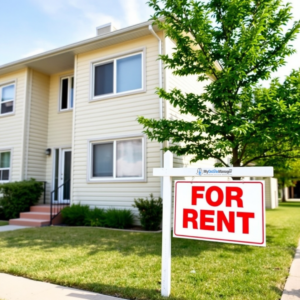The cost of living in the United States is climbing rapidly — and nowhere is this more painfully clear than in the housing market. A recent article from TheStreet revealed a jarring reality: the income required to afford average rent in America has hit a record high, leaving many renters struggling to keep a roof over their heads.
The 30% Rule is Now a Luxury
For decades, financial experts have advised people to spend no more than 30% of their gross monthly income on housing. This rule, intended to ensure financial stability and leave room for other essentials, is now out of reach for a growing number of Americans.
According to recent data, the average renter in the U.S. would need to earn $79,000 annually to comfortably afford a typical rental unit. That’s nearly double the current national median individual income, which hovers around $45,000–$50,000 depending on the state and profession.
This means millions of Americans are being priced out of the rental market — even if they have full-time jobs.
Urban Areas Are the Hardest Hit
In major cities like New York, Boston, and Los Angeles, the situation is even more extreme. For example:
-
New York City renters need to make about $144,000 a year just to afford the median rent without being cost-burdened.
-
In Boston, the income required is similarly high, with rents routinely exceeding $3,000 per month for modest apartments.
-
Even cities traditionally seen as more affordable, like Phoenix and Atlanta, are seeing dramatic rent increases that are far outpacing local wages.
Soaring demand and limited supply, combined with inflation and high interest rates that keep people from buying homes, are driving this crisis.
The Rise of the Rent-Burdened Majority
According to Harvard’s Joint Center for Housing Studies, more than half of renter households in the U.S. are now considered “rent-burdened,” meaning they spend more than 30% of their income on rent. Alarmingly, over 12 million households are “severely rent-burdened,” devoting more than half of their income to keeping a roof over their heads.
This leads to painful trade-offs. When a majority of income goes to rent, there’s less left for food, transportation, education, healthcare, and emergency savings. The long-term effects can include chronic stress, financial instability, and even homelessness.
Minimum Wage Workers Can’t Keep Up
One of the starkest realities from TheStreet’s article is this: nowhere in the U.S. can a minimum-wage worker afford a one-bedroom apartment at fair market rent without being rent-burdened.
Even in states where minimum wage is higher than the federal level ($7.25/hour), the math simply doesn’t work out. A person earning $15 per hour, working full-time, makes around $31,200 annually before taxes — far short of what’s needed to rent in most urban or suburban areas.
What’s Driving the Crisis?
Several factors have converged to create this perfect storm:
-
Stagnant Wages: While rent has surged, wage growth for many sectors — particularly service and retail — hasn’t kept pace.
-
Limited Supply of Affordable Housing: Construction of new housing has lagged far behind population growth, especially for affordable units.
-
Post-Pandemic Market Shifts: The pandemic triggered migration, with many people moving to previously affordable cities, pushing up local rents.
-
High Home Prices and Interest Rates: Many would-be homeowners are staying in rentals longer because they can’t afford to buy, adding more competition to an already tight rental market.
What Needs to Change?
The current trajectory is unsustainable, and experts are calling for a multi-pronged approach to fix the housing crisis:
-
Increase the supply of affordable housing through zoning reforms, subsidies, and public-private partnerships.
-
Adjust minimum wages and wage policies to better reflect the true cost of living in different regions.
-
Strengthen tenant protections to prevent excessive rent hikes and evictions.
-
Offer rental assistance programs that bridge the gap for the most vulnerable populations.
But perhaps most importantly, this crisis needs attention at the national level. As housing costs continue to spiral, it’s clear that the American Dream — one that includes a safe and stable home — is increasingly out of reach for millions.
Final Thoughts
Housing is a human need, not a luxury. As the gap widens between what Americans earn and what housing costs, it’s critical that we take this moment seriously and push for systemic change. If nothing is done, we risk a future where stable housing becomes a privilege reserved for the wealthy — and that’s a crisis we can’t afford to ignore.
Source: TheStreet – The Income Needed to Pay the Average Rent in the U.S. Is Shocking

